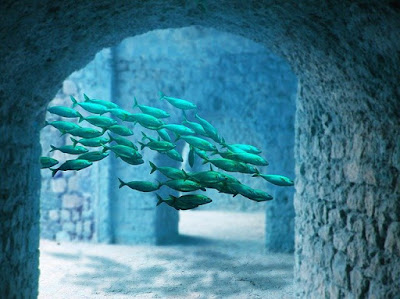Fish Tank Sizes: What are The Best Tank Sizes You Need For Your Marine Aquarium?
So, you are amazed at the attractive beauty of a marine aquarium and large fish tank sizes, with the tank’s spectacular range of invertebrates and reef fishes thriving in a crystal-clear aquatic world which is the ecological atmosphere of these beautiful creatures.
But how will you put up one of these marine aquariums at your residence? Up to recent times, freshwater aquariums are considered the beginner’s choice as they are much easier to set up and maintain than marine tanks.
However, with advances in technology and breeding methods, even a novice can now try his/her hand at a marine aquarium. To start off, a bigger tank is always better — consider a 40 to 50-gallon tank, to begin with.
A large tank provides much water to allow easier stabilization of water composition, a critical factor for the survival of marine life. In addition, marine fishes generally need more space as they can be quite territorial.
Here’s a quick way to calculate the volume of a rectangular tank (fish tank sizes):
- Measure the tank’s height, width, and depth in inches.
- Multiply these 3 numbers together, then multiply the result by 0.0036 to get the tank’s volume in gallons.
- Take off about 10% of the calculated volume to compensate for space taken by rockwork and other aquarium decors. To do this, multiply the volume by 0.9.
If you are working with measurements in centimeters, multiply the height, width, and depth together, then divide the result by 1000 to arrive at the tank’s volume in liters. Again, take away 10% from this calculation.
To achieve that spectacular marine aquarium look, opt for a glass tank instead of acrylic. Although acrylic is much lighter and thus the tank is easier to lift, this material is prone to scratches. Always ensure your glass tank is not cracked and properly sealed.
Lastly, ensure that the tank is seated on a leveled stand that is sturdy. Locate your aquarium near a wall with power sockets to provide easy electrical connections for lighting, pumps, etc. Ensure that there is sufficient space between the wall and the back of the tank for access during the maintenance of your marine aquarium.
Setting up a marine aquarium requires careful planning for long-term success. You can’t be in a hurry; instead, you’d need to commit enough time to take care of the marine fishes and their environment.
Take your time to learn about marine life — the fishes, the invertebrates, and the environment — and also related aquarium equipment. A good resource to consult is the guidebook “Ultimate Secrets to Saltwater Aquarium Fish and Invertebrates”.
Here’s to a good start in your quest to create your very own marine aquarium.
Natural Seawater vs Synthetic Seawater
Saltwater fishes require water that resembles seawater, which is their natural environment. However, it is not necessary for your marine pool to be filled with ocean seawater as a synthetic concoction of freshwater and a salt mix can work well.
Ocean water may actually be unsafe for your home aquarium. If collected from shorelines near urban areas, this seawater often contains pollutants, parasites, and bacterial cultures which will make the aquarium environment unstable for the marine creatures.
Even if one goes further out, the untreated ocean water may still require filtration and aging in the dark; most likely, it will require chlorination, filtering, and de-chlorination before it can be used in your tank.
For starters, synthetic seawater is not merely water containing dissolved sodium chloride, i.e. table salt. Marine fish will not survive in this “salty” water as it lacks the complex composition of ions and trace elements that is found in ocean seawater.
Based on studies by marine biologists, seawater contains both major ions (e.g. chloride, sodium, sulfate, magnesium, etc) and minor ions (bicarbonate, bromide, borate, etc). In addition, many trace elements crucial to the health of aquatic life are present, such as fluoride, zinc, copper, phosphorous, chromium, etc.
Thus, to replicate seawater the synthetic way, a good salt mix is important. Avoid cheap brands as these could be deficient in certain essentials and tend to give inconsistent results. Do not compromise quality here as the health of your aquarium inhabitants depends on it.
Never add dry salt mix directly into an aquarium tank that is already populated. Doing so can damage the gills of fishes and shock the delicate invertebrates. Always prepare synthetic seawater upfront, allowing it to aerate for a day before introducing it during a water change.
Keep your saltwater aquarium beautiful and thriving with aquatic life with good aquarium fish care tips and lots of patience. The resulting enjoyment and satisfaction are often the best rewards.
Learn more about fish tank sizes and saltwater aquarium tips and secrets from the “Ultimate Secrets to Saltwater Aquarium Fish and Invertebrates” guidebook and create the marine aquarium you’ve always wanted.
| GO TO HOME PAGE | CLICK HERE |
